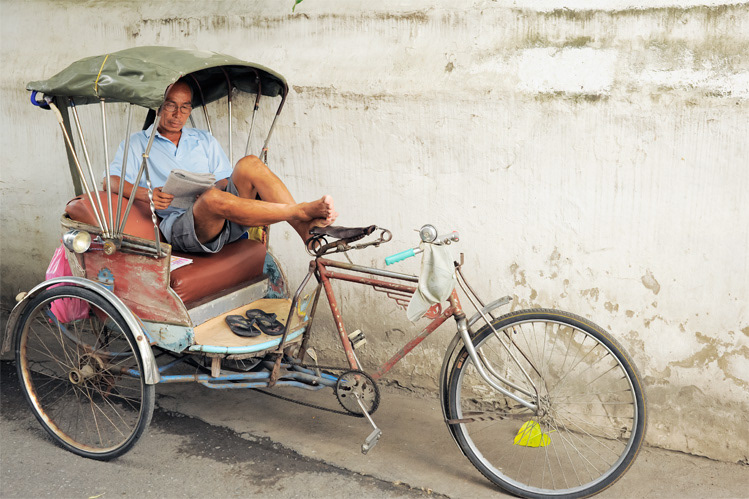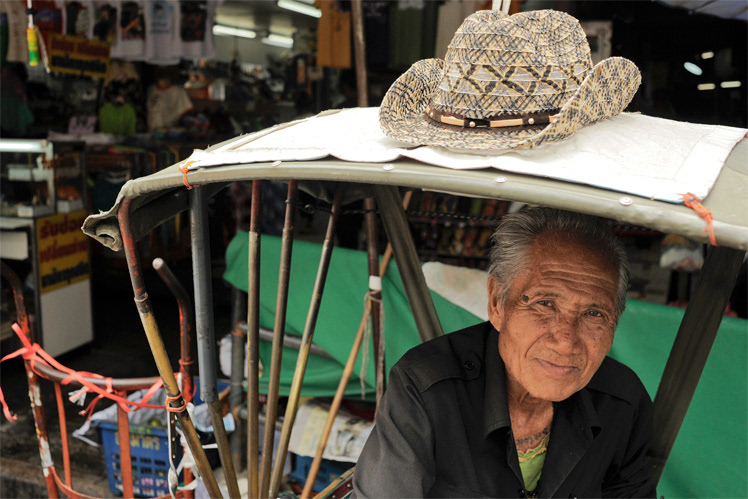








Thirty years ago, Chiang Mai was covered by more than one thousand samlors (local name of pedicabs). The gradual arrival Songtaws (small group bus with no destination) has significantly reduced the number of vehicles human traction. Today, nearly about 200 still resist, mainly around the markets.




























At the heart of the market Warorot backed by a Chinese temple, a shady lane sharing walls between vendors grill on one side and a single file of pedicabs on the other. The heat prompted drivers to big fans of a merchant noodles. I take this opportunity to detail the cyclos, gear worthy of a global transport museum. The framework is particularly long and features a logo near the gallows. Certainly one of the manufacturer or a particular brand series. Another sign of belonging is located under the seat: bronze or steel, a statuette of twenty centimeters hangs between the uprights of a welded fork on the platform.
I saw the Pegasus, eagles, ducks, Hanuman the monkey god, and three star best known for adorning the grille of a German sedan branches. A timeless cyclo features two dominant lions worn globe that the driver rotates on its axis with pride. This trademark is no longer on this unique machine in Chiang Mai.
I saw the Pegasus, eagles, ducks, Hanuman the monkey god, and three star best known for adorning the grille of a German sedan branches. A timeless cyclo features two dominant lions worn globe that the driver rotates on its axis with pride. This trademark is no longer on this unique machine in Chiang Mai.

